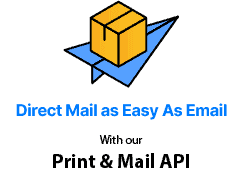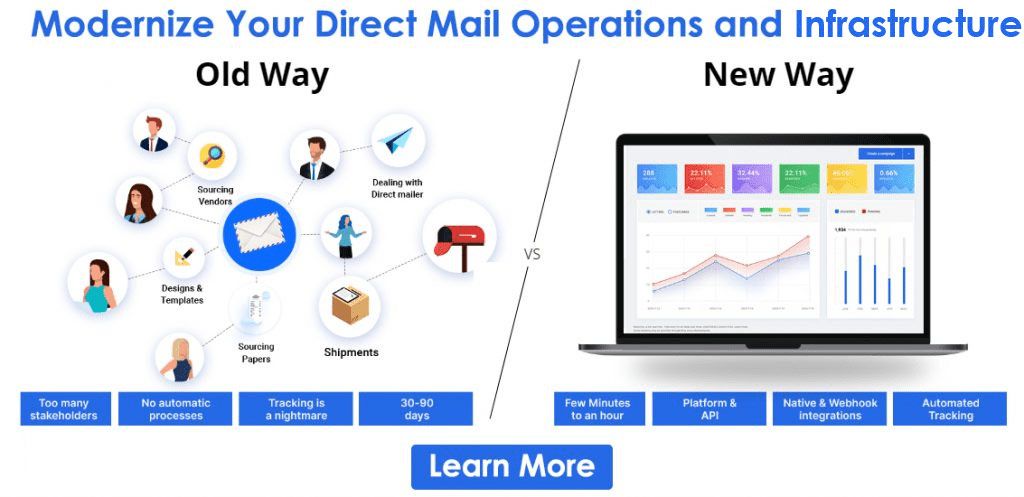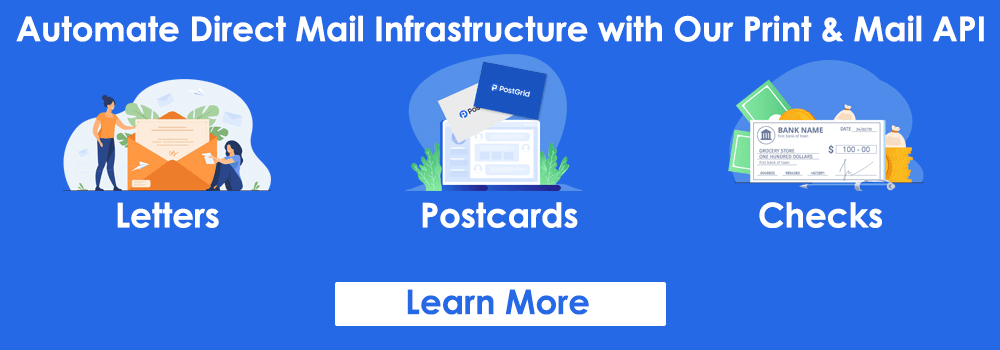What Is a Subrogation Letter and How Insurance Companies Should Deliver It
What Is a Subrogation Letter and How Insurance Companies Deliver It?
The consensus about insurance is that it is a contract where an individual is entitled to financial protection and reimbursements in lieu of losses. This often creates a situation where the insurance companies have to pay for the loss or damage incurred by a third party.

Let’s take this case as an example. You met with an accident where the third person was at fault. You are hospitalized and need health treatment, the bills of which can amount to quite high. Normally, a person sends their medical bills for reimbursement to their insurance provider. Your insurer approves the reimbursement and pays you. In between all these, the insurer was the one who had to bear the financial strain for the actions caused by the third party.
So how can insurance service providers handle this issue?
This is where subrogation comes forth. Subrogation is a legal right held by the insurer to claim the third-party’s expenses responsible for the accident. Subrogation defines the rights of the insurer against the person at fault and the right to claim the reimbursement.
How do Subrogation Letters Work?
Subrogation allows the insurer to pursue claims against the third party at fault for the accident. Normally, the insurance provider pays promptly to its client who meets with an accident and then proceeds to seek the third party’s claim. The third party or his insurance company will then have to pay off the insurance provider who had borne the cost. Subrogation is a major part of insurance policies these days and is mostly seen in the auto insurance field.
Here’s a subrogation letter example to brief you on how the process works:
Step 1: A policyholder meets with an accident. The person at fault was the third party. The insurer ends up at the hospital and requires medical treatment, the bills of which may reach $20,000. He sends the reimbursement claim to his insurance provider.
Step 2: The insurance provider reviews the claim, approves the payment promptly, and pays the insured person.
Step 3: The insurance company then investigates the accident and sends a letter with subrogation terms to the third party responsible for the accident. The at-fault person can either ask his insurance provider to pay the claim of $20,000. If he doesn’t have the insurance, then he is liable to pay off the dues.
What is a Subrogation letter?
A subrogation letter is a written document that contains the terms of the subrogation and the pursuit of a claim against the third party. It is sent by the insurance provider of the injured person to the third party at fault. It is only issued after the insurance provider has already paid the reimbursements to the injured client. Subrogation allows the insurance provider to seek claims up to the amount paid in reimbursement by the insurer.
When is a Subrogation Letter Issued?
An insurance company needs to initiate the proceedings for subrogation within a stipulated timeframe, i.e., 30 to 45 days. The insurance company conducts its investigation of the accident to find out whether the third party is at fault before proceeding to send the letter. Insurance service providers follow a commonly accepted letter of subrogation format. The letter generally includes the following points:
- Date of letter creation
- Legal names of the insured client and at-fault third party.
- The insured client claims the sum of reimbursement.
- The sum is paid by the insurance provider to the client.
- Summary of the damage incurred therein.
- A request to the third party and his insurance policy if he has any
- A request for means of contact with the insurance provider of the at-fault third party.
A subrogation letter is issued only when the third party hasn’t paid for the injured person’s expenses. This means that the injured policyholder cannot claim expenses from the third party and also seek reimbursement from the insurance company at once.
How is a Subrogation Letter Issued?
A subrogation letter is considered as official communication, and hence direct mails are preferred. The use of direct mails provides a record of communication to the insurance provider and the third party. The same can be produced in the court as evidence during the lawsuit if the third party ignores the letter.
Can You Use Direct Mail Automation to Send a Subrogation Letter?
As an insurance provider, you may be looking at hundreds of subrogation letters a day. Normally the drafting, designing, printing, and mailing of subrogation letters are conducted manually. Handling hundreds of them a day can mean a huge waste of working hours and resources. The entire process of arranging the letter and seeking the courier partner for delivery might seem time tedious and laden with hassles.
This is where an automated direct mailing platform can help you turn the process into a hassle-free one. With the direct mailing platform and API, you can create an automated mailing procedure resulting in cost-effectiveness and time-saving. Direct mailing platforms come with features like detailed analytics, real-time tracking options, multiple postage alternatives, the ability to conduct a successful mailing of the subrogation form letter, and more. Direct mailing platforms also provide convenient record-keeping and compliance handling to aid your database management.
Direct mail automation can help cut down on the long working hours and other overhead costs allowing the insurance provider to send the subrogation letter with timely delivery to the recipient.
Can Automated Direct Mail Platforms Help Provide Leverage to an Insurance Company?
Direct mail automation platforms are not just limited to drafting and mailing subrogation letters. They have wide usage and can add a cutting edge to the insurance company. They can use this leverage to upscale their growth against their counterparts in the market. Here’s how automated direct mail platform and letter printing API help insurance companies in various ways:
Personalized Campaign
Automated direct mail marketing allows an insurance company to add a dash of personalization to its campaign. And what’s the better way to gain a place in the customer’s heart than by creating a personalized campaign. A dedicated, personalized campaign will increase the value of service provided to the customer and help retain them. This directly reflects on customer engagement, and the number of clients closed at the end of the day. A generic direct mail campaign often falls short, citing the boring pattern and outdated means. An automated direct mail campaign can help address the customer base’s growing needs and turn them into prospective sales.
Detailed Campaign Analytics
Automated direct mail platforms come with detailed campaign analytics and records that can be fetched via the dashboard. The dashboard is designed with the user interface in mind and easily accessible with just a few clicks. These reports can help analyze the status of the campaigns and the customer engagement generated therein. It can provide the necessary information on each campaign’s performance and the results derived from the same. If needed, with detailed campaign analytics, a core target area can be highlighted, and a prime focus can be shifted towards this group.
Targeted campaigns allow the insurance company to use the direct mail lists to identify the right client base and create campaigns that will entice them towards the insurance provider’s services.
Database Management and Cleansing
Automated direct mailing provides database management options to insurance providers. The database management, along with the analysis tools provided by the direct mail platform, can streamline your campaigns and turn them into a success. Along with the database management, you also get the data cleansing feature with the platform.
Over time, data gets riddled with mistakes and issues that can make it irrelevant to the campaign. Data cleansing is of utmost importance in such cases as it de-clutters the data and removes the prospects that don’t add value to the campaigns. This helps the data to be streamlined with valid prospects for whom you can generate campaigns.
Creative Customizable Designs
Automated direct mail platforms come embedded with various templates and customizable options. They have a host of selections like postcards, flyers, letters, brochures, letters of subrogation insurance format, and more. As an insurance company, you can target the best informative and appealing mail option that can help inform your target audience about your offerings.
The general rule of thumb is to go for the brochures and flyers as the mail options as they have a large area to integrate visually appealing images and key highlights of your products. Many insurance companies have also started a complete wholesome package with a postcard, brochure, and card included in the same mail for better outreach and appeal to consumers.
Scalability
Direct mails had a criticism thrown at it previously about the scalability. Though it has shed the tag quite a lot in recent years, still scaling your direct mail advertisements is often considered a difficult task. That is something automated direct mail helps to eradicate. Automated direct mailing can execute the campaigns at any scale ranging from a single piece to tons of thousands with ease. This helps minimize the costs of logistics and campaigning.
Real-time Tracking
Normal direct mail campaigns can often be hard to trace, and the tracking tools don’t yield the maximum benefits all the time. This may cost insurance companies lots of time and money in the long run as they follow a wait and watch policy on whether their package has been received or not. Automated direct mails take care of that with real-time tracking from a single user-intuitive dashboard.
You can track the package’s real-time location and even change the address if you want to ensure that the package reaches the intended destination. The dashboard is easy to use and offers easy to use interface for the users.
Supports Diversified Policy Communication
Subrogation documents form a small part of the documents that insurance providers send to the users. There are different documents like insurance bills, statements, proof of mailing, reinstatement, notice for collateral, and more that need mailing.
Automated direct mailing can help design and customize different documents along with mailing and tracking of the same. They also provide customized printing and designing for documents like renewals, monthly policy documents, policy cancellation notices, and more.
Ensures Compliance and Data Integrity
Insurance documents contain classified and sensitive data that can cause severe damage to the person or entity if got into the wrong hands. It is a reason why HIPAA and PIPEDA standards came into place to ensure that compliance and privacy are maintained at all times.
With generic direct mails, there are chances of human intervention in between the process. This can lead to cases of a data breach in the worst-case scenario. On the other hand, automated direct mailing cuts down the scope of human intervention and data breaches between the processes. They ensure that your data safety is maintained and every mailpiece is sent with maximum safety means possible.

Other Additional Uses of Direct Mail Automation
Calling upon the use of automated direct mail is not just limited to the insurance sector. It can be used by different sectors like financial services, healthcare, utility companies with large offline communication and mailing options. Here are a few examples of that:
- Invoices: This suits those organizations with product selling lines. Invoice helps to maintain an official proof of the deal and helps track the delivery. With automated direct mail, you can track and keep records of the invoices for future references.
- Bank documents: Although times have evolved, and the era of digital banking has quietly beckoned upon us, physical statements and documents still haven’t gone off the boil completely. Plenty of customers still prefer getting bank statements and other documents in a physical copy. Mail automation platforms allow you to provide physical copies of statements to a specific person with ease.
- Healthcare bills: As per the HIPAA guidelines, an organization needs to abide by the secure processing and transmission of customer information and maintain privacy at all times. With direct mails, there are chances that certain loopholes may arise, and privacy may be vandalized. Automating direct mails can help minimize such loopholes and errors. It also makes sure that the mails are in line with healthcare compliance.
- Utility Bills: Every month, tons of offline utility communications are done by the service provider. They have to send the mails to the service receiver within a very short frame of time. Automating these direct mails can help the utility service providers cut down on the cost and the human resources required for the mailing. It will also help them reduce the cases of late payments and disputes.
Wrapping Up
Traditional direct mail marketing is still a trusted name in the industry and is preferred by many insurance companies for mailing the subrogation letter. But the process has its flaws, like extensive wastage of money, time, and resources. On the other hand, automated direct mail like PostGrid streamlines the process and turns it into a hassle-free one. With PostGrid’s API and platform, you can easily print and mail subrogation letters and save aplenty on expenses.
Join hands with PostGrid today and let your subrogation letter printing and mailing owes end forever.
Ready to Get Started?
Start transforming and automating your offline communications with PostGrid
The post What Is a Subrogation Letter and How Insurance Companies Should Deliver It appeared first on PostGrid.
Via https://www.postgrid.com/subrogation-letter-insurance-companies/
source https://postgridplatform.weebly.com/blog/what-is-a-subrogation-letter-and-how-insurance-companies-should-deliver-it
source https://irenevines.tumblr.com/post/667684776160985088



Comments
Post a Comment